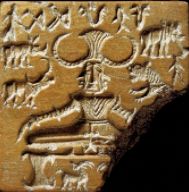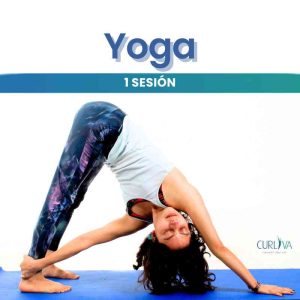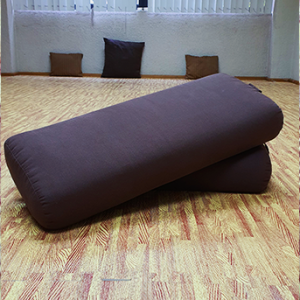
The origins in History of Yoga are lost within the dark walls of time. It began as a group of shamanic practices where men and women shared rituals for procuring material goods for the community. The first evidence of yoga can be found as far back as 2500 B.C. where folded legs in a meditative pose have been identified with this cultural manifestation; the oldest clay piece being a man in such a pose elevated off the floor. Around this time, some of the practices included self-mortification, which is why yoga would be related to the practice of asceticism.
The oldest book that contains the teaching of yoga is composed of 1,028 hymns that hold the teachings, rituals and ceremonies that are based, more on precepts then on people, and we call them The Vedas.
“Ekam sat vipra bahudha vedanti” meaning “He that exists is One.” The sages gave it different names. This is what one of the verses says showing the essence of the vedantic philosophy called advaita: a non-dualistic vision of existence.
Later on, self-mortification resulted unnecessary and this type of offering became symbolic. The Upanishads were written around 800 B.C. in a more accessible structure with questions and answers between a master and his student as the greeks would do three centuries later.
On the one hand, the philosophical thought system was becoming more straightforward with this simple explanatory approach and also more popular because it was no longer seen as something that belonged exclusively to ascetics. Even so, the concept of karma and dharma gained prominence, which the State used as a control tool. These were difficult times, but the spiritual revolution wouldn’t occur until later.
Another important book in the history of yoga, and perhaps the most famous in the West, is The Yoga Sutras; the unifying thread of all yoga. Very short compared to the ones before, with barely 196 aphorisms, but popular because of the way in which the knowledge was systematically organized in eight paths of yoga.
The authorship of the sutras is attributed to the scholar Patanjali and written around 200 B.C. Up until then, and except for the first shamanic practices, yoga was only practiced by men.
In 500 A.D. the thought system and practices of a región that had not been conquered by Indo-Europeans became widespread throughout India and the access to religious practices was reclaimed. The knowledge, once hidden in sanskrit, was now translated into different languages and women were now included, opening up the exploration to feminine energy.
Tantra yoga gave value to the body itself, since it was considered a tool for gaining enlightenment. This was in direct contrast to pre-tantric yoga in which a few sitting and lying down poses were practiced to emphasize that the body, was either to serve the mind or was to be abandoned (as with the ascetics), for the purpose of getting closer to the state of death related to transformation or as access to enlightenment.
Assam and Cachemira, then, bécame home to Hatha Yoga which developed from Tantra. Hatha Yoga rejected the concept of the Wheel of Karma and included magical inclinations that led one to seek immortality, by way of animal postures that men and women would imitate. They were in seach of the Siddhi, normally translated as “success.” A Siddhi was “an adherent that had obtained the capacity for acquiring his hearts desire in this world and did not aspire to any path of spiritual evolution.”
The broad strokes of Hatha Yoga can be found in the Hatha Yoga Pradipika, a light on Hatha Yoga, by Svatmarama in the 14th century in the form of a manual, although the practices themselves had been developed since the 8th century.
This is where my very brief history of yoga ends. Let´s have some tea to develop it even further.
Written by: Diana Pérez
Translated by: Jacqueline Fernandez
Read in spanish
 Pastel de frutos - mediano
Pastel de frutos - mediano
 Pan de caja
Pan de caja
 Curso de formación
$ 999.00
Curso de formación
$ 999.00
 Clase de yoga Presencial (1x)
$ 200.00
Clase de yoga Presencial (1x)
$ 200.00
 Bolster para Yoga
$ 600.00
Bolster para Yoga
$ 600.00

La idea del yoga como una actividad sanadora y llena de beneficios para el cuerpo…

Te estas preguntando qué beneficios tiene la práctica de yoga durante el embarazo, qué posturas…

La glándula pineal es la encargada de producir melatonina, una hormona derivada de la melatonina…
Muy interesante y completa para tratarse de una historia tan milenaria.